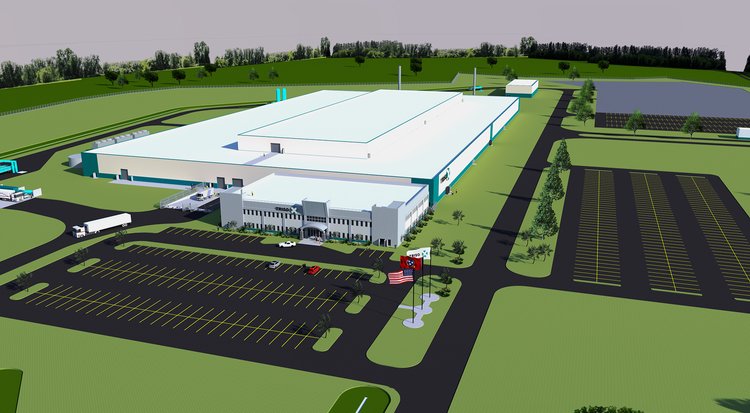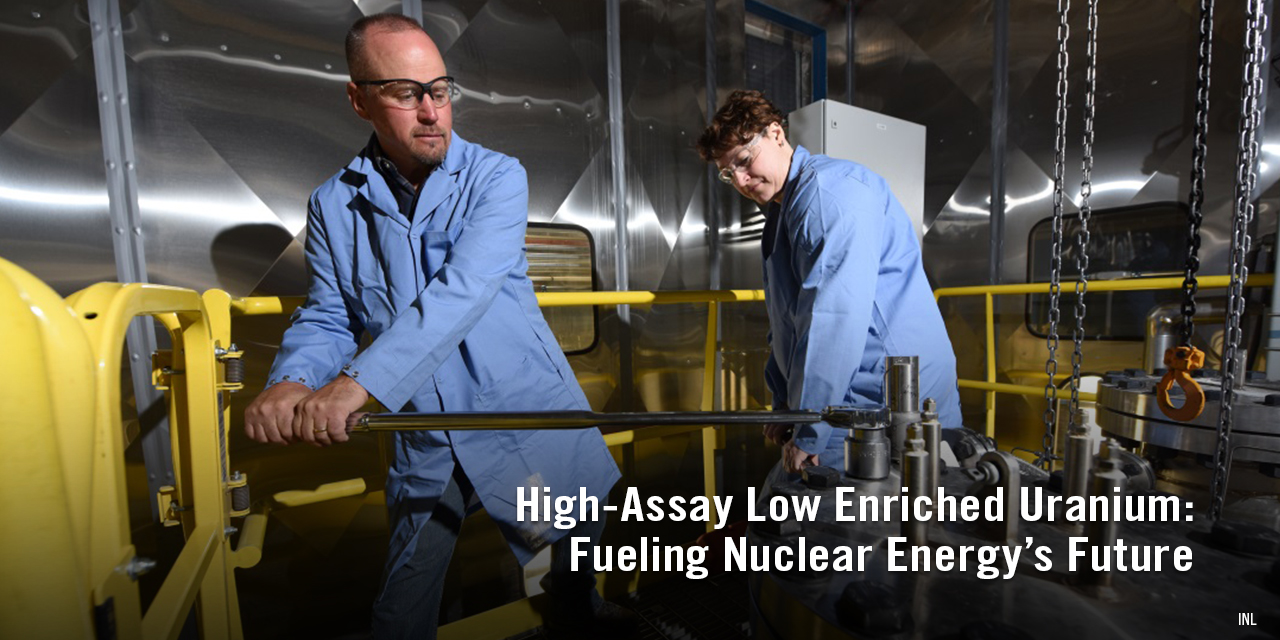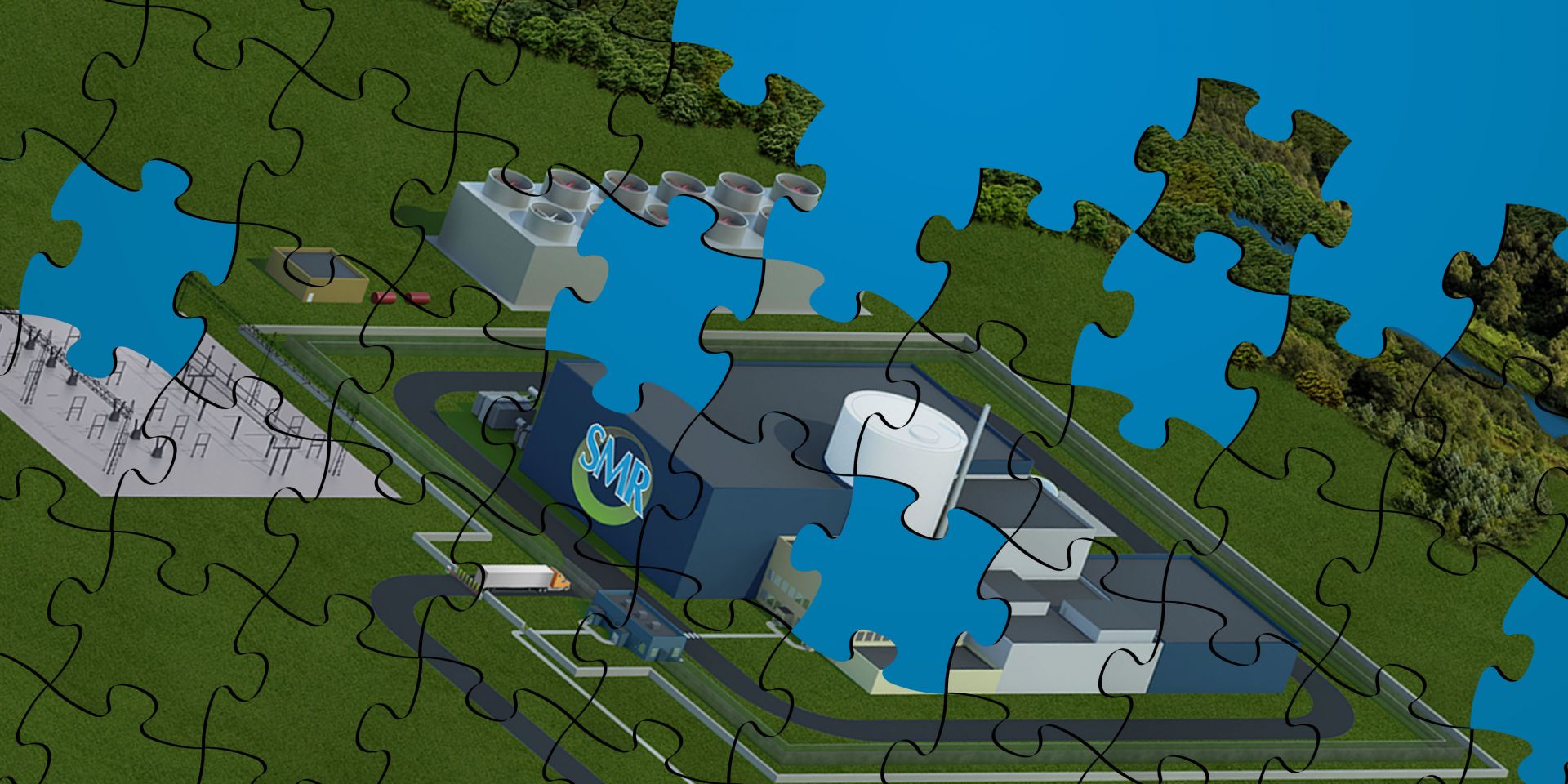The Project Pele microreactor will be fueled by TRISO fuel particles like those shown here. (Photo: INL)
Pictured from left to right: John Tappert, NRC; Jonathan Rowley, NRC; Jacob Zimmerman, NRC; Matthew Bartlett, NRC; Tim Beville, DOE; Jennifer Wheeler, TRISO-X; John Lubinski, NRC; Pete Pappano, TRISO-X; Jill Caverly, NRC; and Shana Helton, NRC. (Photo: X-energy)
Artist's rendering of the proposed TRISO-X Fuel Fabrication Facility (TF3) at the Horizon Center Industrial Park, in Oak Ridge, Tenn. (Image: X-energy)
X-energy has announced that its wholly owned subsidiary, TRISO-X, plans to build the TRISO-X Fuel Fabrication Facility, dubbed TF3, at the Horizon Center Industrial Park in Oak Ridge, Tenn. X-energy has produced kilogram quantities of fuel at its pilot plant at Oak Ridge National Laboratory through a public-private partnership.
The commercial plant will use high-assay low-enriched uranium (HALEU) to produce TRISO particles, which are fabricated into fuel forms, including the spherical graphite “pebbles” needed to fuel the company’s Xe-100 high-temperature gas reactor. Site preparation and construction are expected to get underway in 2022, and commissioning and start-up are scheduled for as early as 2025, according to X-energy.
Members of the Xe-100 reactor protection system team and the first set of prototype equipment. (Photo: X-energy)
X-energy, developer of the Xe-100 small modular reactor, has delivered the first of four sets of equipment for the Xe-100 reactor protection system (RPS) prototype, marking the latest milestone in the company’s efforts under the Department of Energy’s Advanced Reactor Demonstration Program (ARDP).
An illustration of a potential mobile microreactor site at Test Pad D in INL’s Critical Infrastructure Test Range Complex for the grid operation phase of Project Pele. (Image: DOD)
The U.S. Department of Defense (DOD) is looking to reduce its reliance on local electric grids and diesel-fueled generators at military installations. Project Pele is designed to demonstrate the technical and safety features of mobile microreactors capable of generating up to 5 MWe.
Still image from the session. From left to right are Judi Greenwald, Harlan Bowers, Simon Irish, Mike Laufer, and Jake DeWitte.
The 2021 ANS Winter Meeting included an executive session on advanced reactor licensing, featuring the leaders of four of the top advanced reactor companies: Mike Laufer, chief executive officer of Kairos Power; Jake DeWitte, CEO of Oklo; Simon Irish, CEO of Terrestrial Energy; and Harlan Bowers, president of X-energy.
Artist’s rendering of a BWRX-300 plant. (Photo: GE Hitachi Nuclear Energy)
Ontario Power Generation (OPG) has selected GE Hitachi Nuclear Energy (GEH) as its technology partner for the Darlington nuclear new-build project. The companies will work to deploy GEH’s BWRX-300 small modular reactor at OPG’s Darlington nuclear plant, located in Clarington, Ontario.
The TRISO-X fuel pebble shown here contains TRISO particles—HALEU-bearing kernels of oxide and carbide in alternating layers of pyrolytic carbon and silicon carbide. (Image: X-energy)
X-energy and Centrus Energy announced last week that they have completed the preliminary design of the TRISO-X fuel fabrication facility and have signed a contract for the next phase of work. The planned facility would produce TRISO fuel particles and pack those particles into fuel forms, including the spherical graphite “pebbles” needed to fuel X-energy’s Xe-100 high-temperature gas reactor.
The Darlington nuclear power plant.
The Canadian Nuclear Safety Commission has approved the renewal of the site preparation license for Ontario Power Generation’s Darlington new-build nuclear project. First granted in 2012, the license is now valid until October 11, 2031.
Rendition of the IMSR400 power plant in the configuration proposed for the Darlington site. (Image: Terrestrial Energy)
Terrestrial Energy has upgraded the design of its Integral Molten Salt Reactor (IMSR) nuclear power plant, the company announced on September 14. The proposed facility will now feature 390 MWe of generation capacity for grid supply from twin reactors and generators.


















